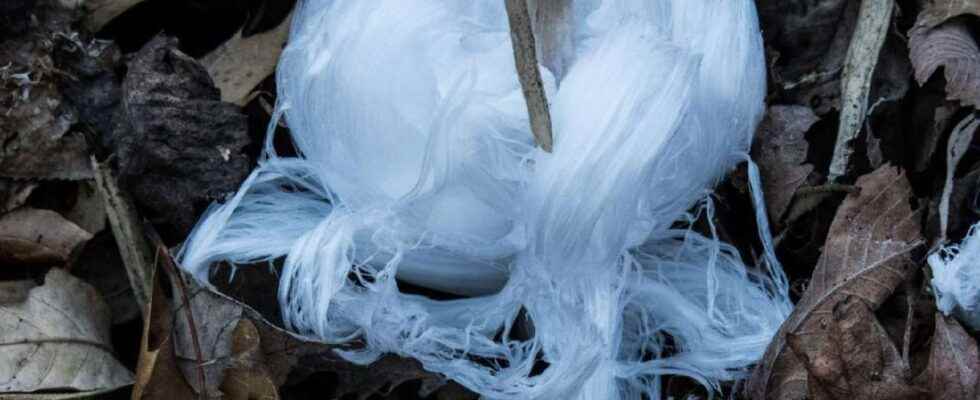You will also be interested
[EN VIDÉO] Under the ice of Greenland, plants reveal its sensitivity to global warming With anthropogenic global warming, the ice of Greenland has begun to melt. If the phenomenon continues, the sea level could rise by some six meters. And gobble up Boston, Miami and London. By showing — through the analysis of a core lost at the bottom of “a freezer for more than 50 years — that the ice of Greenland has completely disappeared at least once in the last million years, under the effect of a natural warming, the researchers suggest that the region could be more sensitive than they imagined so far. © Community Cosmogenic Laboratory, University of Vermont
Immaculate white flowers, frozen around the stems for a few minutes: these are not petals, but ice. In the United States, and more particularly on the Missouri side (but not only), it is common to observe these surprising ice formations in the middle of the night or at dawn. The first pictures of flowers of ice (also called ribbons of ice or flowers of frost) have surfaced quite recently, thanks to the smartphones, because this phenomenon is difficult to predict. The first written observations of ice flowers date back to 1833, in the texts of Sir John Frederick William Herschelphilosopher, physicist and meteorologist.
Two species of plants are capable of producing ice flowers
Ice flowers only form under certain herbaceous plants, especially the Verbesina alternifolia (yellow ironweed) and the Verbesina virginica (White beard). Although native to North America, these very resistant and fairly tall plants adapt very well to weather European and French. I’yellow ironweed can measure 2 to 3 meters and it is the plant most likely to produce ice flowers. The White beard is a very close species but smaller, 1 to 2 meters. These two species have large stems, the origin of the creation of the famous ice flowers. These plants grow naturally in the plains, in the lowest areas, in the meadows or gardens filled with weeds.
Necessary cold and humidity
The phenomenon requires very specific meteorological conditions: cold to -5°C and a significant supply of humidity in the ground, which must not be frozen. It is very common to find these ice flowers near a river. The training process is then very simple. Ice forms from the moisture inside the stem, but when it freezes, the ice causes the stem to burst. A ribbon of ice then forms which extends up the stem. A slight thaw is then enough for this ribbon to fall back, to collapse completely at the foot of the stem, winding around it. This is how the ribbon of ice takes on the appearance of a flower. The phenomenon is very ephemeral and deforms in a few minutes or a few hours.
Timelapse of formation, and deformation, of ice blooms in Kentucky in 2014. © FLPhotoCatcher
In Missouri, Tennessee and Kentucky, in the American states where there are manyyellow ironweeds and of white beards, ice blooms most often occur between October and December, with the following months, January and February, being colder and less humid. To date, no perfectly formed ice flower, like those of the southern United Statess, has yet been photographed in France.
Interested in what you just read?
